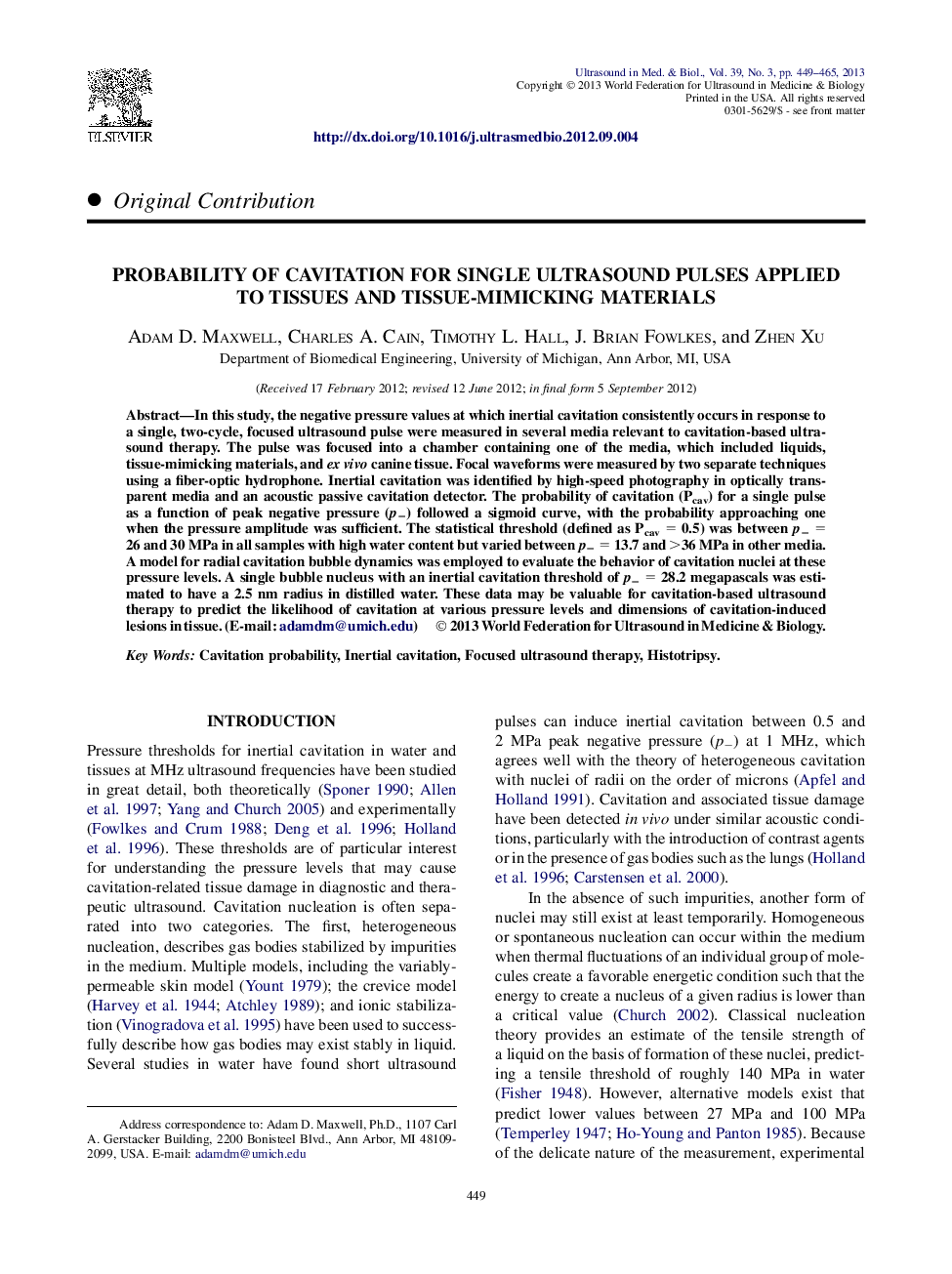| Article ID | Journal | Published Year | Pages | File Type |
|---|---|---|---|---|
| 1761283 | Ultrasound in Medicine & Biology | 2013 | 17 Pages |
Abstract
In this study, the negative pressure values at which inertial cavitation consistently occurs in response to a single, two-cycle, focused ultrasound pulse were measured in several media relevant to cavitation-based ultrasound therapy. The pulse was focused into a chamber containing one of the media, which included liquids, tissue-mimicking materials, and ex vivo canine tissue. Focal waveforms were measured by two separate techniques using a fiber-optic hydrophone. Inertial cavitation was identified by high-speed photography in optically transparent media and an acoustic passive cavitation detector. The probability of cavitation (Pcav) for a single pulse as a function of peak negative pressure (pâ) followed a sigmoid curve, with the probability approaching one when the pressure amplitude was sufficient. The statistical threshold (defined as Pcav = 0.5) was between pâ = 26 and 30 MPa in all samples with high water content but varied between pâ = 13.7 and >36 MPa in other media. A model for radial cavitation bubble dynamics was employed to evaluate the behavior of cavitation nuclei at these pressure levels. A single bubble nucleus with an inertial cavitation threshold of pâ = 28.2 megapascals was estimated to have a 2.5 nm radius in distilled water. These data may be valuable for cavitation-based ultrasound therapy to predict the likelihood of cavitation at various pressure levels and dimensions of cavitation-induced lesions in tissue.
Keywords
Related Topics
Physical Sciences and Engineering
Physics and Astronomy
Acoustics and Ultrasonics
Authors
Adam D. Maxwell, Charles A. Cain, Timothy L. Hall, J. Brian Fowlkes, Zhen Xu,
